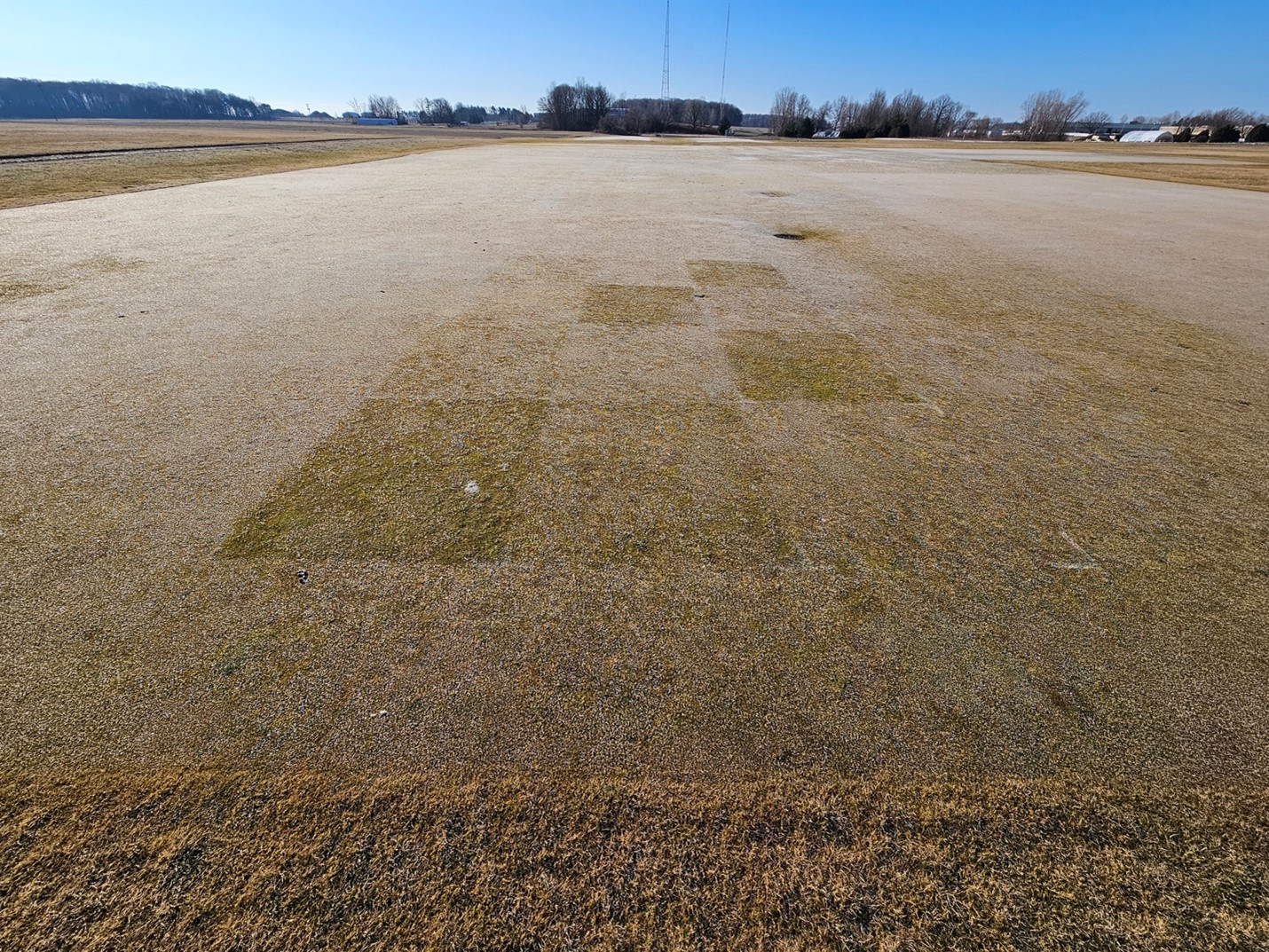By Payton Perkinson, Eric Galbraith, and Kevin Frank, Michigan State University, Doug Soldat, University of Wisconsin-Madison, and Alec Kowaleswski, Oregon State University
Late fall sand topdressing applications have become a common practice in many regions as a possible deterrent to winterkill. There is little data from field trials to either support or refute the benefit of these applications. In the fall of 2023, topdressing applications were made to putting greens at turfgrass research facilities in Iowa, Michigan, Minnesota, Wisconsin, and Norway and on a golf course in Oregon to determine the effects of late fall sand topdressing. The sand topdressing rates applied were none, 3 ft3 sand /1000 ft2 (normal rate), and 6 ft3/1000 ft2 (high rate). Topdressing was applied in a single application after the final mowing of the season and before the first anticipated snowfall. Surface temperature, percent winter damage, and turfgrass quality were assessed between spring snow melt and spring aerification, and topdressed plots were compared to plots that were not topdressed (Figure 1).

Results were mixed across locations, but some commonalities were found in the 1st year of treatments. Surface temperatures were higher for the high topdressing rate treatments, which may result in increased biological activity for snow mold pathogens. At the Wisconsin location, this was in fact the case, with more snow mold on the high topdressing rate treatments. At the Oregon location, surface temperature and turfgrass quality increased with increased topdressing rate, while winter damage decreased with increasing topdressing rates. As of April 11, three weeks after snow melt, no differences in winter damage were visible at the Oregon location. This was a very mild winter across all locations, so the research will be repeated over the 2024-2025 season.